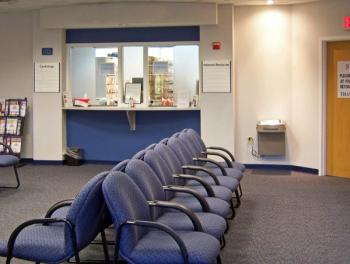
One-step test screens for hepatitis C virus infections
An easy, cost-effective, one-step test can allow clinicians to screen, detect, and confirm hepatitis C virus (HCV) infections, according to a new study.
An easy, cost-effective, one-step test can allow clinicians to screen, detect, and confirm hepatitis C virus (HCV) infections, according to a new study.
“Our novel HCV antigen test system has significantly improved sensitivity and specificity over current tests. Importantly, for the first time, we can use urine specimens for one-step screening and diagnosing of HCV infection,” Ke-Qin Hu, MD, professor of medicine and hepatologist at the
Hu, who is also director of hepatology services at UC Irvine, presented the findings at the
“The current standard practice is a two-step approach, an HCV antibody test for screen and HCV RNA polymerase chain reaction (PCR) for confirming active HCV infection,” said Hu. “The HCV antibody test cannot distinguish active infection from a previous infection. If HCV antibody is tested positive in the blood, the sensitive HCV RNA PCR test must be administered to confirm whether or not the infection is active.”
Related:
In the U.S., the two-step test, which costs more than $200, is standard, and is covered by Medicare and insurance. PCR is not widely available in many countries, he noted.
Hu and colleagues found that the detection of expression of the virus antigens in urine correlated with results from the serum HCV RNA PCR test. They tested the urine of 128 samples for HCV antigens using an enzyme immunoassay. Of those samples, 20 had never been infected with HCV, 15 had a past HCV infection, and 93 had an active viremic infection.
“We found 100% concordance of urine HCV antigen test results with PCR RNA test results,” Hu said. “The 35 samples all tested negative in our HCV antigen test, and the 93 with positive HCV RNA were all positive. This antigen test detects HCV viral protein and directly indicates HCV replication, therefore, is much more specific than the HCV antibody test in diagnosing active HCV infection. We can sort out antibody positives and RNA negatives. If our test is positive, there is an active infection.”
He added: “The ability to detect infection using urine rather than blood avoids needle stick and blood sample collection, greatly reduces the cost and necessary clinical infrastructure for screening and diagnosis, helping to promote widespread adoption of the test on a global scale.”
Research advances now allow greater than 90% of HCV patients to achieve a cure. “Once a patient is cured or achieves a sustained virological response, this reduces mortality and morbidity from liver-related injury,” Hu said. “Treatment is effective and cure translates into improved outcome. But if we don’t screen or diagnose patients, they never receive the treatment they need.”
Newsletter
Stay informed and empowered with Medical Economics enewsletter, delivering expert insights, financial strategies, practice management tips and technology trends — tailored for today’s physicians.















